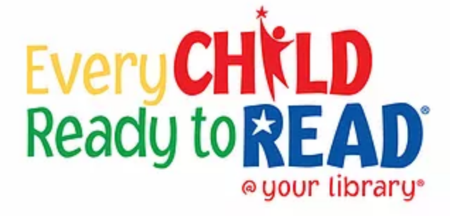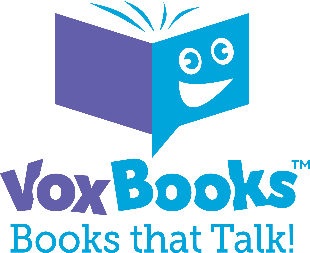Next Steps After Storytime: A Meetup Recap
On March 11, 2025, we had a small but lively discussion about serving emerging readers in a holistic way after storytimes. Our talk centered on how we can promote and encourage literacy for young pre-readers as well as support caregivers trying to bridge the gap to help children become fully-fledged readers. Many parents struggle with how to teach children to read while also instilling a love of reading. Fortunately, we have got you covered with a few ideas to get your patrons started on the path to success.
A great starting point is the Every Child Ready to Read (ECRR) program, which provides a solid foundation to educate parents on early literacy with training and resources.

Another suggestion is to celebrate soon-to-be independent readers with a “Welcome to Reading” kit. The kit could include information for the caregiver along with a curated selection of emerging reader books and fun materials, such as coloring pages, stickers, and a schedule of pertinent library programs designed for 3 to 8 year olds.
A potential investment for libraries are read-along books, such as VOX books or Playaway Products Wonderbooks. Both have audio components attached to printed books to assist new or struggling readers in following along with a story. The books are available for different reading levels and in a variety of languages.


Sydney Stensland with the Mount Prospect Public Library Youth Services Department has developed a three-part progressive series called Ready, Set, Read! This program is designed “for children ages 3 to 8 who are learning to read independently with their adult.”
A brief overview of the program includes:
- A welcome and overview of our time together
- 10 minutes of whole group time
- We meet each letter using these mnemonic flash cards, make it’s sound, and do an associated motion.
- For each sound, we talk about what our teeth/tongue/lips feel like or move like. Sometimes we’ll use these little mirrors to watch how our mouth’s move. We will also sing the sound, stomp the sounds, clap the sounds, etc.—lots of creative multisensory, whole body engagement to make the sound “stick”.
- We may play a short game or read a story
- The last step is to explain the activity stations that the kids will explore with their adults
- 30-40 minutes at 4-6 activity stations
- Stations are multisensory, play based, and varied in play pattern (gross motor, fine motor, constructive play, dramatic play, etc.)
- My goal is that every station is simple enough that adults could replicate them at home
- Simple instructions and talking point ideas for adults are posted at each station
- I roam around the room and engage with kids and families, helping children practice letter sounds and modeling how for the adults.
- A take home flyer is provided with an overview of the activities we did at the program, as well as extension ideas to keep practicing.
Next, in our meetup discussion, when asked what programs or engaging activities did libraries offer to support newly minted readers, the ideas and suggestions flowed!
- After school elementary reading program for kindergartners with a storytime to model reading with an additional take home Scholastic magazine that children can practice reading on their own at home.
- Reading with therapy dogs—Reading to Rover, Bark for Books, etc.
- Reading Buddies—pairing struggling early readers with teens in community service programs. It was noted that this could be a time-consuming venture as the teens would need to be vetted and trained to work with young children, but it can provide a wealth of mentorship opportunities.
- Passive reading and educational games in the children’s room, especially if multi-lingual, to engage ESL families.
- Sight words, in multiple languages, posted throughout the library, especially in high traffic areas, like play zones and changing tables. Several librarians found this difficult to execute, as they had to work with their PR and marketing departments about signage guidelines.
- Scavenger hunts with pictures and words.
- Instructional handouts educating parents about sight words, comprehension levels, publisher designated reading levels, ECRR, etc.
When the discussion turned to readers’ advisory, we found we all struggled. Commonly used online or library designed resources:
- Bibilocommons (https://www.bibliocommons.com/).
- NoveList (https://www.ebsco.com/novelist).
- Common Sense Media (https://www.commonsensemedia.org/).
- Goodreads (https://www.goodreads.com/).
- QR codes, links, or bookmarks for library designed read-alike lists.
- Your library’s website and catalog.
And, as warmer weather approaches, the final topic of the meetup focused on summer reading programs and how to make June and July engaging for everyone in the family. One suggestion was to have kids track “days of reading” as opposed to minutes or books. This leveled the playing field so that everyone, no matter how much time they could devote to reading, could take part in the summer fun and track progress.
If you did not get a chance to complete the survey following this meetup, you can access it again here (https://docs.google.com/forms/d/e/1FAIpQLSdXvXRScyB-Stj9Lh8mj9lUCmTT-jfrjCl9mTfFufe2rvTC0w/viewform?usp=sf_link).
Thank you all for your valuable contributions, and we look forward to our upcoming meetup conversation about managing program burnout on May 13 from 1-2pm (MST).
Resources:
- https://www.thelancet.com/journals/lancet/article/PIIS0140-6736(24)01389-8/abstract
- https://aikenlearning.org/resources/quick_facts.pdf
- https://agelessgrace.com/aging-gracefully-neuroplasticity-movement-ageless-grace/
Additional CLEL resources can be found on our website at https://www.clel.org/professional-development/ as well as CLELCON, the annual fall conference (more information coming soon).
